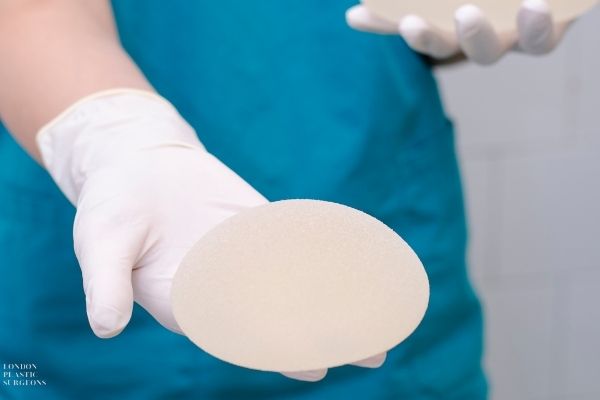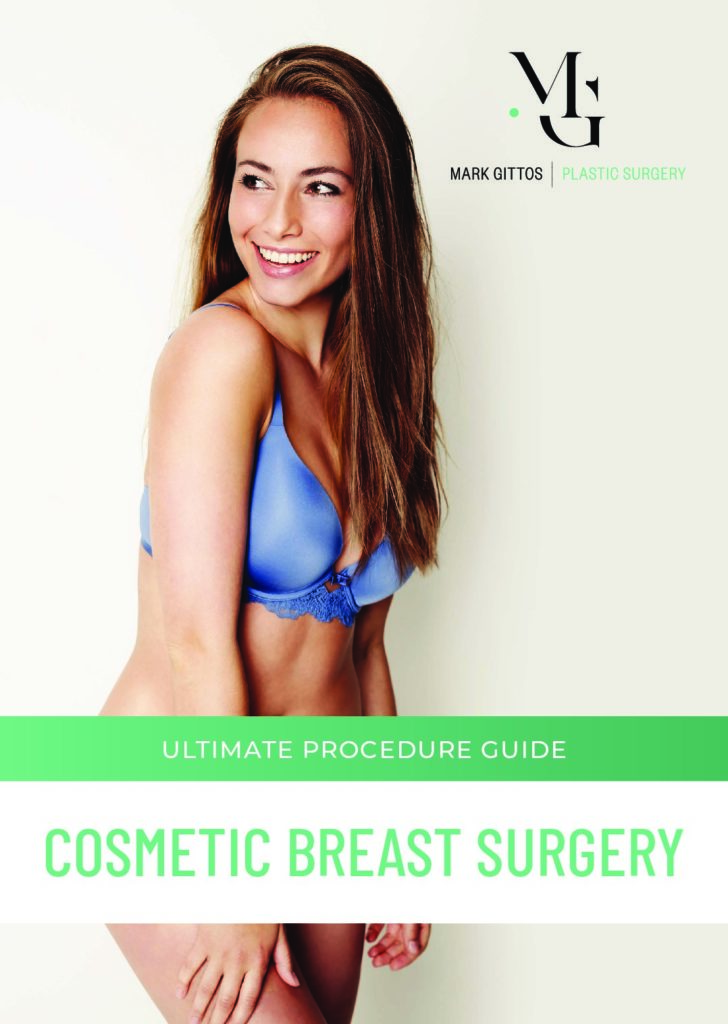Breast Implant Removal and Replacement by Mr Mark Gittos in London United Kingdom

Breast implant removal and replacement surgery, also called exchange surgery is a very common plastic surgery procedure that involves taking out then replacing your existing implants. In this surgical procedure, the surgeon switches out your implant with the new implant. The first part of the procedure is a Breast Implant Removal is also known as breast explant surgery to remove your silicone breast implant. The second part of the procedure is a breast implant replacement or exchange that is similar to breast implant surgery. The pre-existing implant pocket and any breast changes or damage to the implant can make the procedure more challenging. The choice of new implant depends upon your preferences and some patients also choose to have a breast lift done at the same time to reduce excess skin.
Am I a good candidate for breast implant removal and replacement surgery?
Although breast implant does not come with an expiry date, they do have a limited lifespan. Usually, over time, the scar tissue around the implants harden. This can cause pain and discomfort, and also changes the implant’s appearance. This is known as capsular contracture.
If you are going through one of the following symptoms, then it may be time for a breast implant removal and replacement procedure.
- Leaking of the breast implant
- Deposition of hard calcifications around the implant
- Implant associated pain
- Shift or change in the position of the implant
- Tissue death around the implant
- Autoimmune response to the implant
Some other causes for the removal of the implants besides the associated symptoms are :
- Age
- Pregnancy
- Breastfeeding
- You simply don’t want to have implants anymore
- Change in the cosmetic goal and want to change their implant size
Breast implant removal and replacement Procedure:
The procedure is done in a well-equipped hospital setting. It involves the following steps :
- Anesthesia: Most breast implant removal and replacement surgery are performed under general anesthesia which means you will be under sedation throughout the procedure and unaware about the procedure taking place. You will receive pain-relieving medication after the procedure.
- Skin preparation: The operative field and surrounding area is cleaned with antibacterial soap or solution to prevent infection and prepare the surgical site.
- Making an incision: Your plastic surgeon will make an incision to get access to the breast implant. The incision is usually made over the previous incision scar. The common site of incision is under the breast or around the areola of the nipple but it also depends upon how your implants are originally placed and consideration for scar tissue.
- Removal of the implants: The implant access is gained and the implant is removed. Due to the deposition of fibrous tissue, there forms the capsule surrounding the implant. The leaving or removing of the capsule depends upon the surgeon’s choice. Some surgeons will only remove the implant and leave the tissue capsule. Others will remove the capsule – which is more time-consuming.
- Implant replacement: After removing the initial implant, if you have opted for a new implant the surgeon will insert the new implant. Mr Mark Gittos usually uses Motiva implants.
- Incision closure: Once your surgeon has removed and replaced the implants, then the skin is closed using sutures or special glue-like adhesives. Then sterile dressing and bandages are applied over your chest for protecting the incisions. In case of excess bleeding, the drain may be necessary. Drain helps by removing blood and fluid away from the operative area.
Breast implant removal and replacement surgery typically takes place under general anesthesia and lasts up to 1 to 2 hours. The timing of operation depends upon the size of the new breast implant, the surgical technique choice of the surgeon, and whether or not other combined surgery is done at the same time or not. The first step of the procedure is by removing the original implants through incisions made at the first original scar site. If the size of the new implant is similar to that of the existing capsule in terms of shape and size, then replacement surgery can be quick.
Book a consultation now to find out more about the benefits of the Breast implant removal and replacement procedure.
Download your FREE GUIDE to Breast Surgery

Click to DOWNLOAD Mr Mark Gittos Ultimate Guide to Cosmetic Breast Surgery
Why Choose New Replacement implants?
Many of Mr Gittos’s patients choose to change their implants for a variety of reasons
- Changing SIZE of their implants.
- Change from TEXTURED to Smooth implants
- Changing OLDER implants for newer modern MOTIVA implants
- Repositioning their implants
Find out more about Breast Implant Options on our Breast Implant page
Risks and Complications of breast implant removal and replacement surgery :
Breast implant removal and replacement surgery is a safe procedure, but with any surgery side effects are common. Since the operation is performed under general anesthesia, some anesthetic complication may be seen,
- Drug hypersensitivity
- Allergic reaction
- Nausea
Some other rare but possible complications are :
- Bleeding or infection
- Ongoing pain
- Skin discoloration
- Nerve damage, which could decrease nipple sensation
- Delayed and poor healing of the incision
- Hematoma: A collection of blood underneath the skin
- Death of fat tissue or embolism
Other delayed complications include:
- Capsular contracture
- Implant rupture
- ALCL: This complication is very rare, which is breast implant-associated lymphoma.
You should discuss these risks and complications with your surgeon in detail and assess how to avoid them before you make any decision regarding the breast implant removal and replacement procedure.
Your breast implant removal and replacement Journey

Consultation
The first phase of your breast implant removal and replacement is to get a consultation with a qualified and skilled plastic surgeon. At the consultation, you will be able to discuss with your surgeon the procedure and implant that is best for you. You should discuss with your surgeon what you hope to achieve from the procedure, as well as discuss what is possible and not possible on your existing body anatomy.
At the consultation, your surgeon will provide you with the options available, and you can select the one which is most preferential for you. You can ask some questions to your surgeon at the time of consultation such as :
- Are you a good candidate for this procedure?
- What will be expected from you to get the best result?
- What surgical technique is recommended for you?
- How long of a recovery period can I expect, and what kind of help will you need during your recovery?
- What to expect your breast implant revision to look like over time?
You should also have a comprehensive discussion regarding risk and complications.
Pre-Procedure
If you choose to proceed with the surgery, a series of blood investigations and a chest x-ray is carried out to evaluate fitness for your surgery. If you are on certain medications, you may be asked to stop them a few days or weeks before surgery.
Procedure
The operation is performed under general anesthesia and can take one to two hours to complete. Your surgeon will make an incision along with your previous existing scar site. Then the surgeon will remove the existing implants. If you choose not to use the implant anymore, then the surgeon will close the scar, In the case of the replacement, the surgeon will place a new implant through the incised aperture on the skin. In case your new implant is larger or differently shaped then the surgeon might have to increase the size of the capsule and the incision site.
Recovery
The post-operative pain is very minimal but pain may persist for a few days or weeks following the surgery. You will be prescribed painkillers according to your need to ease the pain. Following the operation, you will be kept in the observation room for a few hours to closely monitor your vitals. Once your vitals are stable and initial recovery from the anesthetic drug is complete then you are safe to return home. You will be allowed to leave the clinic with your friends and family. The follow-ups are arranged on a regular basis to track your recovery period and final result.
Frequently Asked Questions about Breast Implant Removal & Replacement

What happens if you don’t replace breast implants?
- Some women keep their original implants for their entire lives and are completely satisfied. However, not replacing implants in situations where it is medically indicated has consequences. Taking, for example, a silicone rupture can cause your breast to feel tight or uncomfortable. In this scenario, the problems should be addressed as soon as possible. Some potential consequences of breast implants if they are not replaced are:
- Leaking of the breast implant
- Infection of the incision site
- Dissatisfaction with cosmetic appearance
- Autoimmune response to the implant
- Necrosis or death around the implant
- Pain- related or aggravated by the implant
- Shifting or movement of one or both implants
What happens when you remove your breast implants?
- Breast implants give your chest perkiness, fool, and attractive look. After removal of those implants, the breast will return to the original shape, because of the pool of gravity. The breast will be saggy as before. However, they may sag even worse than they did before.
How long does it take to recover from breast implant replacement?
- The timeline of recovery varies from person to person. However, most surgeons agree that a full recovery can take on average six weeks. After a proper assessment of your overall health, the surgeon can provide a brief idea about recovery before the procedure.
How often should you replace breast implants?
- While breast implants come with a lifetime warranty on implant devices, they are not meant to last a lifetime. It is recommended that both silicone and saline breast implants be replaced every 10 years, but this might not be the reason to swap them out. Some studies suggest that the longer someone has them, the more they are likely to have localized reactions. However, it is important to understand that breast implants whether saline or silicone gel, are not meant to last indefinitely. Whether due to complications, malfunction, or personal change in preference, patients will require implant replacement procedures throughout their lifetime.
Is a breast lift necessary after implant removal and replacement?
- It is always not necessary to have a breast lift after the breast implant removal and replacement surgery, although many of them do. If a small breast implant was used and the elasticity of your skin is good, breast lift surgery is usually not needed.
How do I know when my breast implants need replacing?
- If you are having frustrating or painful symptoms related to your breast implants or feel like it is time for a change, then it is time for breast implant removal and replacement. Many potential scenarios can lead to the need for breast implant replacement and in some cases, the removal of breast implants. Some common reasons for breast implant replacement include:
- Breast implant rupture
- Breast implant button out
- Implant malfunction
- Capsular contracture
- Past surgical error
- Change to new personal taste
- Change in lifestyle
- Breast implant-related illness
How long is it safe to keep breast implants in?
- Although there is no expiry date for breast implants, they aren’t guaranteed to last a lifetime. The average saline or silicone implants usually lasts for 10 years. There are early signs and symptoms to watch:
- Hardening: Many people develop capsular contracture or hardened scar tissue around one or both implants. This can cause tightness, pain, tenderness, and abnormal cosmetic change to the breast
- Saline rupture
- Tingling
- Numbness
- Pain or tenderness
- Swelling
- Changes in sensation
- If you suspect there are symptoms or issues related to breast implants you should contact your surgeon right away. In this time check out for signs and symptoms that may require breast implant need to be replaced:
- Deflated implant
- Loss in the symmetry between two implant
- Firmness in the implant
- Breast tenderness
- The implant is in a too high or too low position
- Abnormal shape of the implant
- Pain, discomfort, or long-lasting loss of sensation
- Over time breast implants wear and tear and need to be replaced. The FDA estimates that breast implants should last ten years. But the longevity of implants also depends upon the quality of implants.
How much does it cost to remove and replace breast implants?
- The average cost to remove and replace a breast implant will vary quite significantly, and this is dependent on several factors. The surgeon’s level of expertise, the condition of your breast tissue, and type of surgery required and the type of implant to be used vary the surgery price. For more detailed information about the cost of the procedure, you can book a consultation with our expert surgeon Dr. Mark Gittos.
- Visit Mr Gittos’ pricing and payment page for more information
Further Reading and Medical References
- Chun HJ (2020) Dueling Perspectives in Explantation: En Bloc or Not. Annual Scientific Meeting of the American Society of Plastic Surgeons
- Tang SYQ, Israel JS, Afifi AM (2017) Breast implant illness: symptoms, patient concerns, and the power of social media. Plast Reconstr Surg 140:765e–766e
- ASPS American Society of Plastic Surgeons page on Breast Implant Replacement – revision surgery
Why Choose Dr. Mark Gittos?
Dr. Mark Gittos is a highly skilled and well-trained specialist plastic surgeon with over twenty-five years of experience under his belt. He approaches each surgery with innovative approaches to ensure that the best results are achieved.
To conclude, breast implants are not for a lifetime. They are usually advised to be removed and replaced at an interval of 10 years. One of the most common reasons to remove a breast implant is the formation of scar tissue around the implant which eventually hardens the implant. If you are considering breast implant removal and replacement be sure to have a thorough discussion with our experienced surgeon Dr. Mark Gittos about your expectations, recovery journey, and possible complications.
